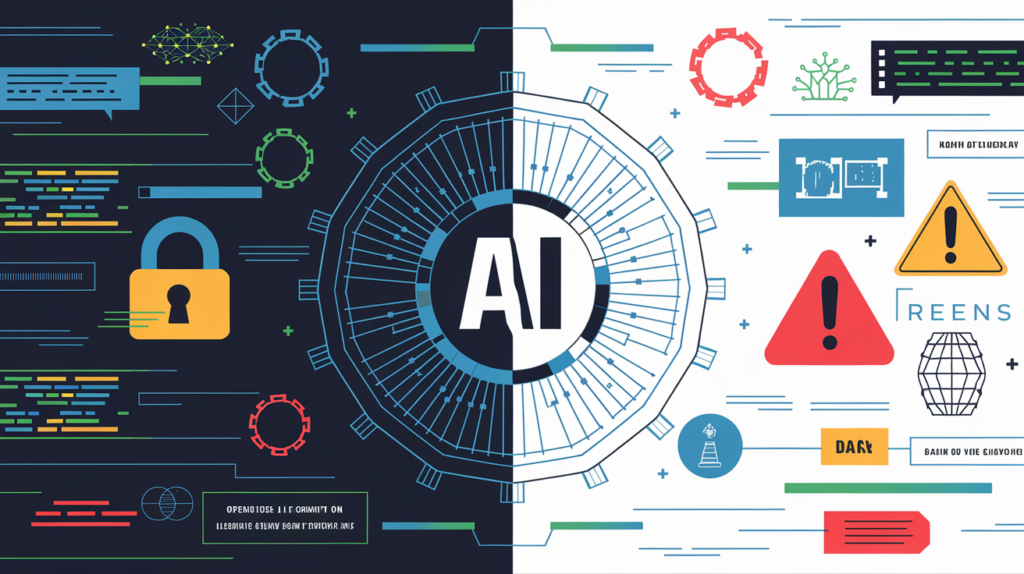Deepseek AI Banned: A Global Technology Controversy
The recent ban of Deepseek AI in several regions has sparked a global debate surrounding AI regulation, data security, and the future of open-source development. This article delves into the reasons behind the Deepseek AI banned situation, examining its impact on developers, businesses, and the broader AI landscape. We will explore the controversies, analyze the implications, and offer perspectives on navigating this complex technological and regulatory challenge.
What is Deepseek AI?
Deepseek AI is a sophisticated AI platform renowned for its capabilities in natural language processing (NLP), computer vision, predictive analytics, and automation. Its user-friendly API enables seamless integration into diverse applications. The platform’s open-source nature fostered a vibrant community, accelerating innovation. However, this very openness significantly contributed to the Deepseek AI banned predicament.
Reasons Behind the Deepseek AI Ban
The decision to Deepseek AI banned in various regions stemmed from a confluence of factors:
- Data Privacy Concerns: AI platforms, including Deepseek AI, require extensive data processing, raising concerns about potential breaches and misuse of sensitive personal information. Regulations like GDPR impose stringent data protection measures, making such vulnerabilities a critical issue. The potential for non-compliance significantly contributed to the Deepseek AI banned outcome.
- Security Vulnerabilities: Deepseek AI’s open-source nature, while advantageous for collaboration and transparency, also exposes its codebase to potential exploitation by malicious actors. This inherent vulnerability is a primary reason why Deepseek AI banned in certain jurisdictions. The lack of robust, built-in security mechanisms exacerbated the risks.
- Potential for Misuse: Deepseek AI’s advanced capabilities can be misused for generating misleading content, sophisticated deepfakes, or even propaganda. This potential for malicious applications played a substantial role in the decision to Deepseek AI banned. The platform’s power requires careful consideration of ethical implications.
- Non-Compliance with Regulations: The global landscape of AI regulations is fragmented. Deepseek AI’s failure to comply with specific regional laws and data protection standards directly contributed to the Deepseek AI banned status. Inconsistencies in international regulatory frameworks add to the complexity.
- Geopolitical Factors: Geopolitical tensions and international sanctions can influence technological bans, regardless of the technology’s inherent qualities. These external factors can impact the adoption and regulation of AI technologies like Deepseek AI.
Impact of the Deepseek AI Ban
The ban carries significant implications across various sectors:
- Impact on Developers and Businesses: Businesses heavily reliant on Deepseek AI face disruptions and potential financial losses. Migrating to alternative platforms is a costly and time-consuming process, impacting productivity and profitability.
- Impact on Innovation and Research: The ban impedes research and development, particularly in regions where it’s enforced. Restricting open-source innovation represents a considerable setback for the AI community.
- Market Dynamics: The ban creates a competitive advantage for compliant AI platforms, reshaping the market landscape. This shift necessitates adaptation and innovation within the AI industry. The Deepseek AI banned situation accelerates this process.
- Ethical and Societal Implications: The ban underscores the tension between technological advancement and regulatory oversight. Balancing innovation with responsible AI development is crucial for societal well-being.

Open-Source vs. Proprietary AI: The Broader Debate
The Deepseek AI banned controversy underscores the ongoing debate surrounding open-source versus proprietary AI development. Open-source models promote collaboration and transparency but may exhibit security vulnerabilities. Proprietary solutions prioritize security but can limit innovation and community contributions. This fundamental tension is a central theme in future AI development.
Strategies and Alternatives
For entities affected by the Deepseek AI ban, several strategies can mitigate the impact:
- Exploring Alternatives: Transitioning to compliant AI platforms is crucial. Careful evaluation of alternatives is necessary to ensure functional equivalence and regulatory compliance.
- Enhancing Security: Implementing rigorous security protocols, including code audits, robust encryption, and regular security updates, is vital for mitigating vulnerabilities.
- Engaging with Regulators: Proactive dialogue with regulators demonstrates commitment to compliance and fosters collaboration in shaping future AI regulations.
- Hybrid Models: Combining open-source components with proprietary, secure modules can offer a balanced approach, leveraging the benefits of both models.
Future Outlook
The future of Deepseek AI in banned regions depends on various factors:
- Regulatory Revisions: Changes in regulations may accommodate innovative solutions and address evolving security concerns.
- Technological Improvements: Enhanced security features and compliance mechanisms can alleviate regulatory concerns and potentially lead to a reversal of the ban.
- Market Pressure: Strong demand for the platform could influence regulatory decisions and potentially lead to reconsideration of the ban.
- Global Trends: The emergence of harmonized international AI standards could impact the ban and encourage greater global interoperability.
Conclusion
The Deepseek AI banned case highlights the urgent need for a balanced and nuanced approach to AI regulation. The ongoing debate underscores the importance of fostering secure, responsible, and ethically aligned AI development. The future trajectory of Deepseek AI, and AI development as a whole, hinges on addressing the concerns raised by this significant event.
FAQ
| Question | Answer |
|---|---|
| What is Deepseek AI? | Deepseek AI is an advanced AI platform with capabilities in NLP, computer vision, predictive analytics, and automation. |
| Why was Deepseek AI banned? | The ban resulted from data privacy concerns, security vulnerabilities, potential misuse, and non-compliance with regulations. |
| What are the implications of the Deepseek AI ban? | The ban impacts developers, businesses, research, and the broader AI market, creating significant disruptions. |
| What are some alternative AI platforms? | Many compliant alternatives exist; the best choice depends on specific needs and compliance requirements. |
| Can Deepseek AI be reinstated? | Reinstatement hinges on addressing identified security and compliance issues and demonstrating adherence to relevant regulations. |
| What is the key debate surrounding the Deepseek AI ban? | The central debate revolves around balancing open-source innovation with the imperative for secure and compliant AI. |
| How can developers mitigate the impact of the Deepseek AI ban? | Developers can mitigate impacts by exploring alternative platforms, implementing robust security, engaging with regulators, and developing hybrid models. |

